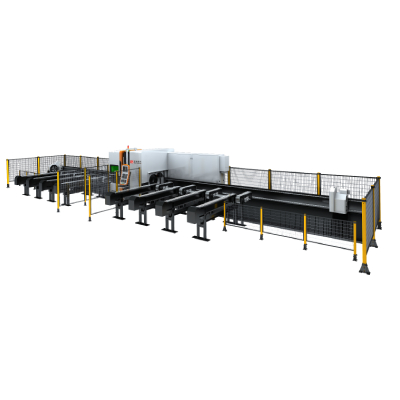****

Exploring the Advancements and Applications of Laser Flat Cutting Machines in Modern Manufacturing Processes
In the ever-evolving world of manufacturing, technology continues to play a crucial role in improving efficiency, precision, and versatility. One of the standout innovations in recent years is the advent of laser flat cutting machines. These devices utilize advanced laser technology to execute precise cuts on flat materials, making them essential in various industries, including automotive, aerospace, construction, and many more. This article explores the advancements, applications, and benefits of laser flat cutting machines in modern manufacturing processes.
The Technology Behind Laser Flat Cutting Machines
At the core of laser flat cutting machines is the laser itself, which emits a focused beam of light with immense energy. This beam is capable of cutting through various materials, such as metal, plastic, wood, and composite materials, with exceptional precision. The cutting process involves several key components, including the laser source, optics, and a motion system that guides the laser beam across the material.
The most common types of lasers used in these machines are CO2 lasers and fiber lasers. CO2 lasers are known for their efficiency in cutting non-metallic materials and are particularly effective with metals when higher power levels are applied. On the other hand, fiber lasers offer superior performance for metal cutting, delivering higher photon density and faster cutting speeds due to their shorter wavelength.
Advancements in Laser Cutting Technology
Over the past few years, laser cutting technology has seen significant advancements. Manufacturers are now integrating machine learning and artificial intelligence into these systems, enabling them to optimize cutting paths, reduce waste, and improve overall production efficiency. Additionally, advancements in software tools allow for seamless integration with design software, providing operators with the flexibility to make real-time adjustments based on project needs.
Another notable development is the growing trend toward automation in manufacturing processes. Many contemporary laser flat cutting machines can be automated, reducing the need for manual labor and enabling continuous operation. This is particularly beneficial for high-volume production environments, where speed and efficiency are paramount.
Applications of Laser Flat Cutting Machines

Exploring the Advancements and Applications of Laser Flat Cutting Machines in Modern Manufacturing Processes
The versatility of laser flat cutting machines makes them applicable across various sectors. In the automotive industry, for example, they are used to cut intricate parts and components for vehicles, enhancing both design flexibility and production speed. Similarly, the aerospace sector relies on laser cutting for the manufacturing of complex components, where precision is critical to ensure safety and performance.
The construction industry also reaps the benefits of laser cutting technology. Architects and builders use laser flat cutting machines to produce detailed cuttings for architectural designs, façades, and other structural elements. The accuracy offered by laser cutting helps reduce material waste and supports sustainable building practices.
Furthermore, the electronics industry utilizes laser flat cutting for the precise shaping of circuit boards and other components, ensuring that the intricate designs required for modern electronics are achieved without compromising quality. The ability to cut materials in various shapes and sizes gives manufacturers the flexibility to innovate and respond quickly to market demands.
Benefits of Laser Flat Cutting Machines

Exploring the Advancements and Applications of Laser Flat Cutting Machines in Modern Manufacturing Processes
One of the primary advantages of laser flat cutting machines is their ability to deliver unparalleled precision. The focused laser beam allows for intricate cuts that are achievable with minimal kerf, resulting in cleaner edges and reducing the need for secondary finishing processes. This precision translates into improved product quality and consistency, essential for any manufacturing operation.
Another significant benefit is flexibility. Laser cutting machines can adapt to a wide range of materials, thicknesses, and designs, making them suitable for both prototyping and mass production. With the right software, operators can quickly change designs and settings, allowing for shorter lead times and faster turnarounds on projects.
Moreover, the efficiency of laser flat cutting machines contributes to reduced production costs. Although the initial investment in a laser cutting machine may be higher compared to traditional cutting equipment, the long-term savings from reduced waste, lower energy consumption, and less required labor make them a financially sound choice for manufacturers.
Conclusion
In conclusion, laser flat cutting machines have become indispensable tools in modern manufacturing, revolutionizing how companies approach cutting processes. With advancements in technology enhancing their capabilities and broadening their applications across various industries, these machines are poised to drive greater innovation and efficiency in manufacturing for years to come. As businesses continue to seek ways to enhance productivity and reduce costs, laser flat cutting machines will undoubtedly play a pivotal role in shaping the future of manufacturing. Cnc Letter Fiber Laser Cutter
